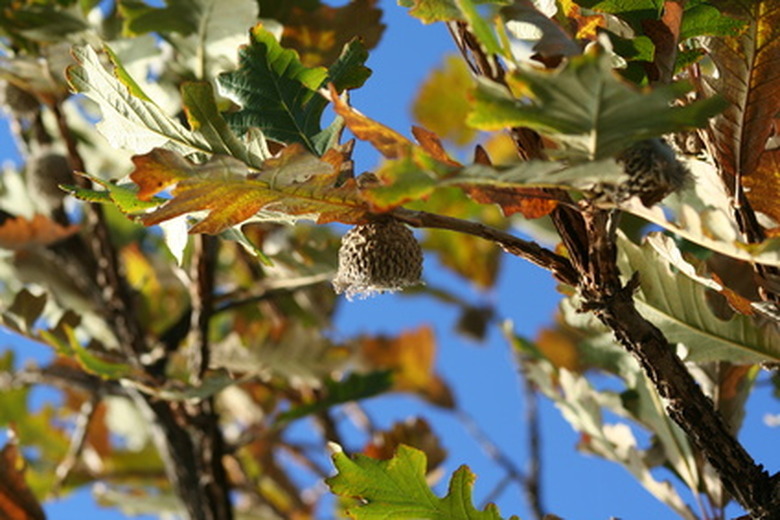Growth Rate Of Oak Trees
The growth rate of oak trees varies greatly depending on the particular species. Oak tree species exist either as deciduous or evergreen trees and exhibit a range of growth from slow to rapid. Identify different species that are attributed to varying rates of speed for the best selection for your home landscape.
Vigorous Growth
For growth rates to reach their ultimate potential, good care of your oak trees is necessary. Oak trees of all species generally thrive in full sun exposure to partial shade, according to the Clemson University Extension. Excessively shaded environments may slow the growth process. Grow oaks in acid, well-drained soil and avoid extremely wet conditions that may increase susceptibility to disease.
- The growth rate of oak trees varies greatly depending on the particular species.
- Oak tree species exist either as deciduous or evergreen trees and exhibit a range of growth from slow to rapid.
Slow
The white oak tree species (Quercus alba) is a tall deciduous tree that grows up to 100 feet tall. The growth process is a slow one, with white oaks producing new growth at a rate of 10 to 15 feet within a span of 10 to 12 years, according to the Clemson University Extension. Though growth is slow, white oaks have a life expectancy surpassing 100 years.
Moderate to Fast
The deciduous Southern red oak tree (Q. falcata) has a moderately fast growth rate. This tree reaches a height of 70 to 80 feet and acquires new growth at a rate of 25 feet every 20 years, according to the Clemson University Extension. English oak trees and bur oak trees also have moderate growth rates and both display yellow-brown foliage in autumn, according to the Colorado State University Extension. The Southern live oak (Q. virginiana) has a moderate growth rate; the Southern live oak reaches up to 60 feet in height, according to the University of Florida IFAS Extension.
- The white oak tree species (Quercus alba) is a tall deciduous tree that grows up to 100 feet tall.
- The Southern live oak (Q. virginiana) has a moderate growth rate; the Southern live oak reaches up to 60 feet in height, according to the University of Florida IFAS Extension.
Rapid
Water oak trees (Q. nigra) have a rapid growth rate of approximately 25 feet per 10 years, according to the Clemson University Extension. Water oaks reach up to 60 feet in height. Willow oak trees (Q. phellos) reach up to 75 feet in height and are considered rapid growers with new growth of 25 feet every 12 years. Pin oaks (Q. palustris) exhibit a rapid annual growth rate of 18 inches; tree height reaches 70 feet.
Problems
Growth rate is affected and inhibited by common problems like pests and disease. For example, problems like scale, an insect infestation of oaks, often results in stunted growth. In mild cases, scale is controllable through hand removal, but when infestations become severe, an application of horticultural oil is necessary, according to the Clemson University Extension. This insect pest, in addition to other potential conditions, decreases the vigor of oak trees; trees in decline suffer health and growth problems and occasionally face death. The moment you notice abnormal symptoms on your oak tree, determine the underlying problem and the appropriate management method.
- Water oak trees (Q. nigra) have a rapid growth rate of approximately 25 feet per 10 years, according to the Clemson University Extension.
- Willow oak trees (Q. phellos) reach up to 75 feet in height and are considered rapid growers with new growth of 25 feet every 12 years.
